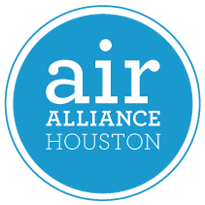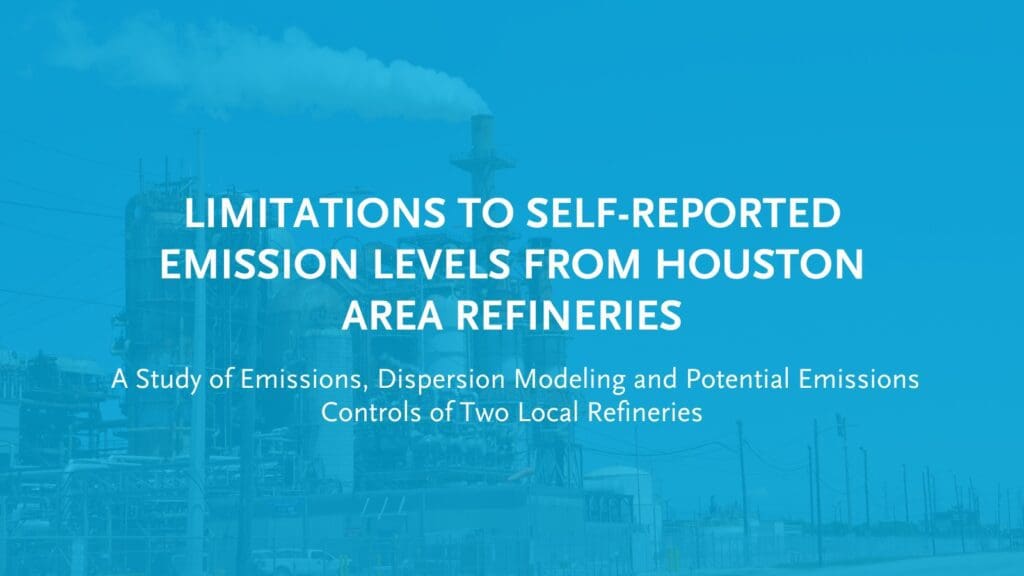By examining two Houston-area refineries – LyondellBasell’s Houston Refining and Chevron’s Pasadena Refinery (also known as Pasadena Refining System, Inc or PRSI) – as case studies, our new research report reveals that air pollution from oil refineries is likely to be higher than the amount they self-report. This underreporting may be contributing to unsafe levels of air pollution in nearby communities already exposed to cumulative risks from multiple sources of pollution.
Shedding light on the limitations of the current industry self-reporting practice is important because state and federal agencies use these reports to help determine significant sources of air pollutants, estimate risks to local residents, and target regulatory actions.
Our study, conducted in collaboration with the Environmental Integrity Project (EIP), ‘Limitations to Self-Reported Emission Levels From Houston-Area Refineries,’ analyzed and modeled the self-reported benzene emissions from these two refineries and compared the results to real-time benzene concentrations captured by fenceline air monitors. The findings were troubling: The average measured fenceline concentrations were 10 – 100 times higher than the emissions estimates self-reported by the facilities to regulatory agencies, and the evidence gathered by the study suggests that most of the benzene measured at the fenceline is coming from the refineries themselves.
Since much of the excess emissions found in the study come from flaring, the report proposes a number of flare management improvements that would bring benzene emissions into better compliance. In addition, the study highlights the importance of a robust fenceline monitoring network as a source of information to identify unintentional and excess releases and work towards addressing these emissions.
Read the Executive Summary | Lea el Resumen Ejecutivo en Español
Read full Report

